Every building tells a story. Some, such as the Radical Hotel in Asheville, North Carolina, tell multiple stories, not all of them true.
One tale starts in the 1920s with Fred Kent, who ran Biltmore Wheathearts, a successful breakfast cereal company that operated out of a five-story brick structure on the French Broad River in Asheville. As time passed, the building served numerous businesses, including a wholesale grocer and a coffee trader. Then it fell into disrepair and was designated a nuclear fallout shelter in the 1950s. Boarded up and tagged with graffiti, it remained abandoned as artists and craftspeople in the 1990s and 2000s started occupying nearby industrial buildings and pioneering what is now called the River Arts District (RAD). That’s all fact-based.
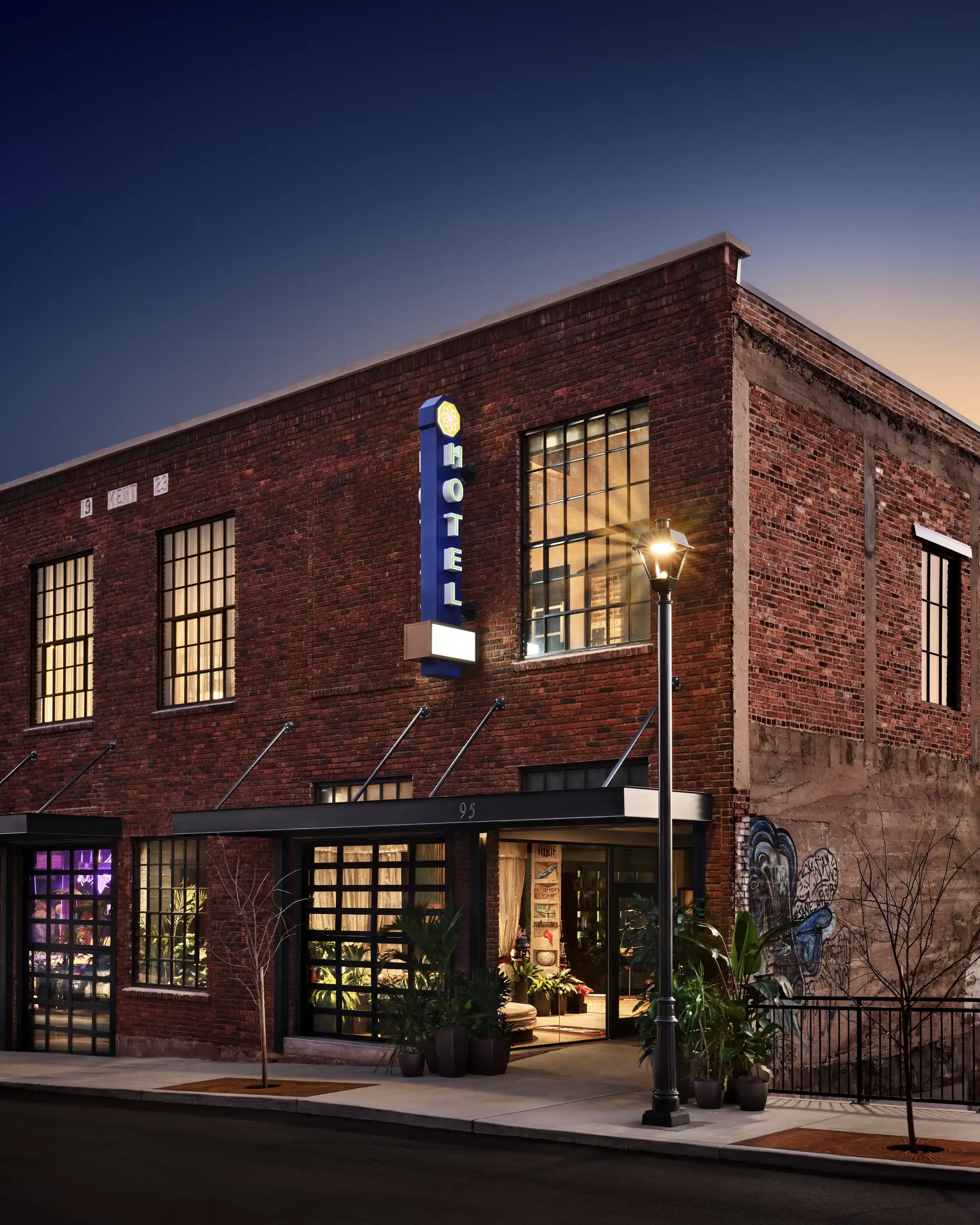
Photo © David Mitchell
Enter Jason Cordon and Amy Michaelson Kelly, who run Hatteras Sky, an Atlanta real-estate development company, and are converting several old properties in Asheville into small hotels. When he and Kelly bought the forlorn warehouse, known locally as the Kent Building, they wrote a request-for-proposals challenging designers to envision a 70-key hotel that would capture the structure’s rich history from Southern capitalism to Cold War survivalism.
Suomi Design Works, one of five firms invited to submit ideas, decided to take threads of that history, add imagined new storylines, and weave them together in a tapestry blending fact and fiction. Michael Suomi, who founded the firm in 2019 after 15 years at New York–based Stonehill Taylor where he headed projects such as the TWA Hotel at JFK Airport, brought in set designer Kris Moran, who had worked on several Wes Anderson films, including The Royal Tenenbaums and Moonrise Kingdom. Together they developed a complex narrative for the Radical, conjuring a branch of the Kent family that traveled to Germany, got stuck in East Berlin after World War II, and produced an heir seeped in the post-Iron-Curtain punk scene. They imagined this estranged Kent coming to Asheville and directing the resurrection of the family’s derelict cereal factory into an edgy boutique hotel. Suomi and Moran’s concept for the project was by far the most extreme of the five proposals and grabbed the two hoteliers immediately, says Cordon.
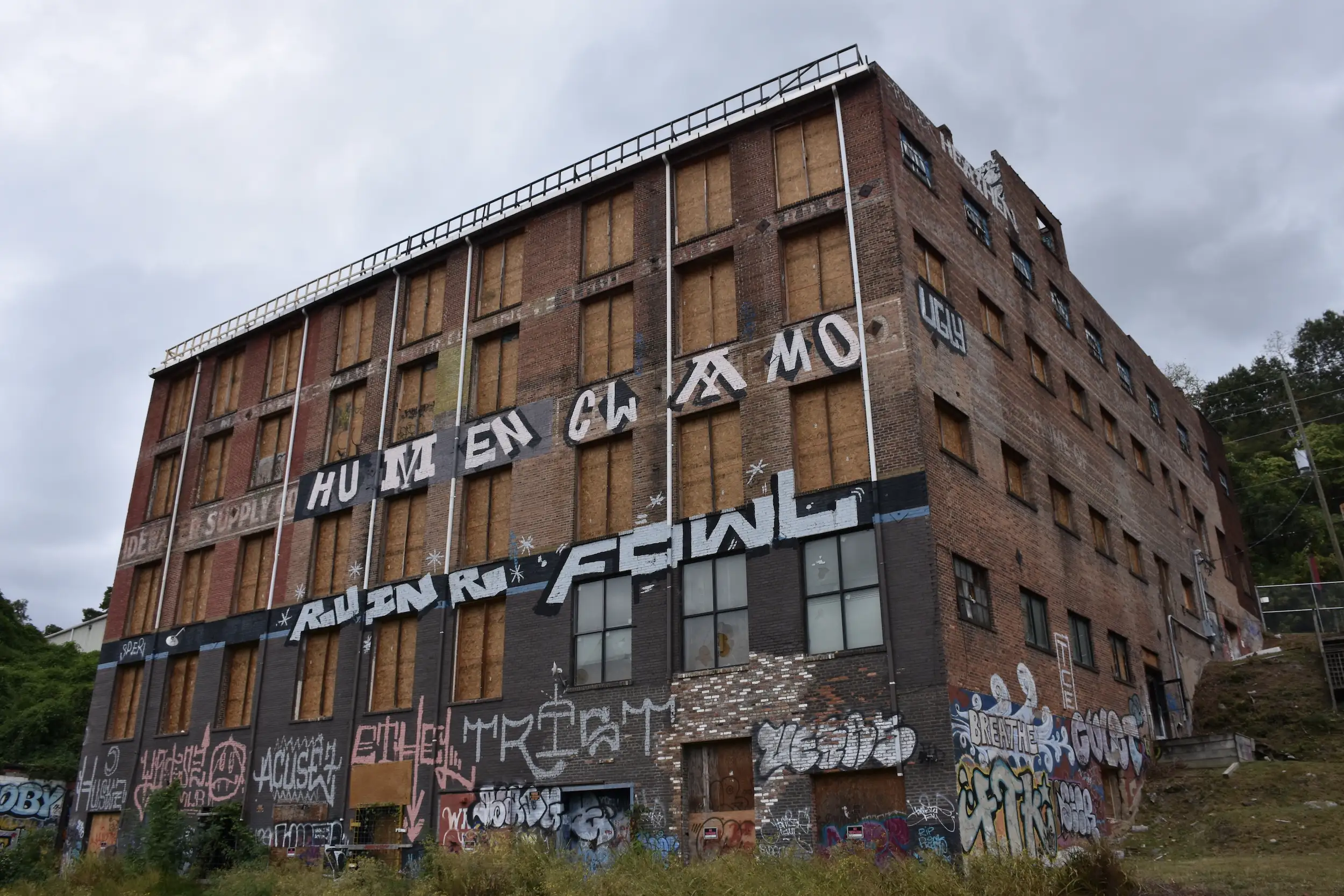
1
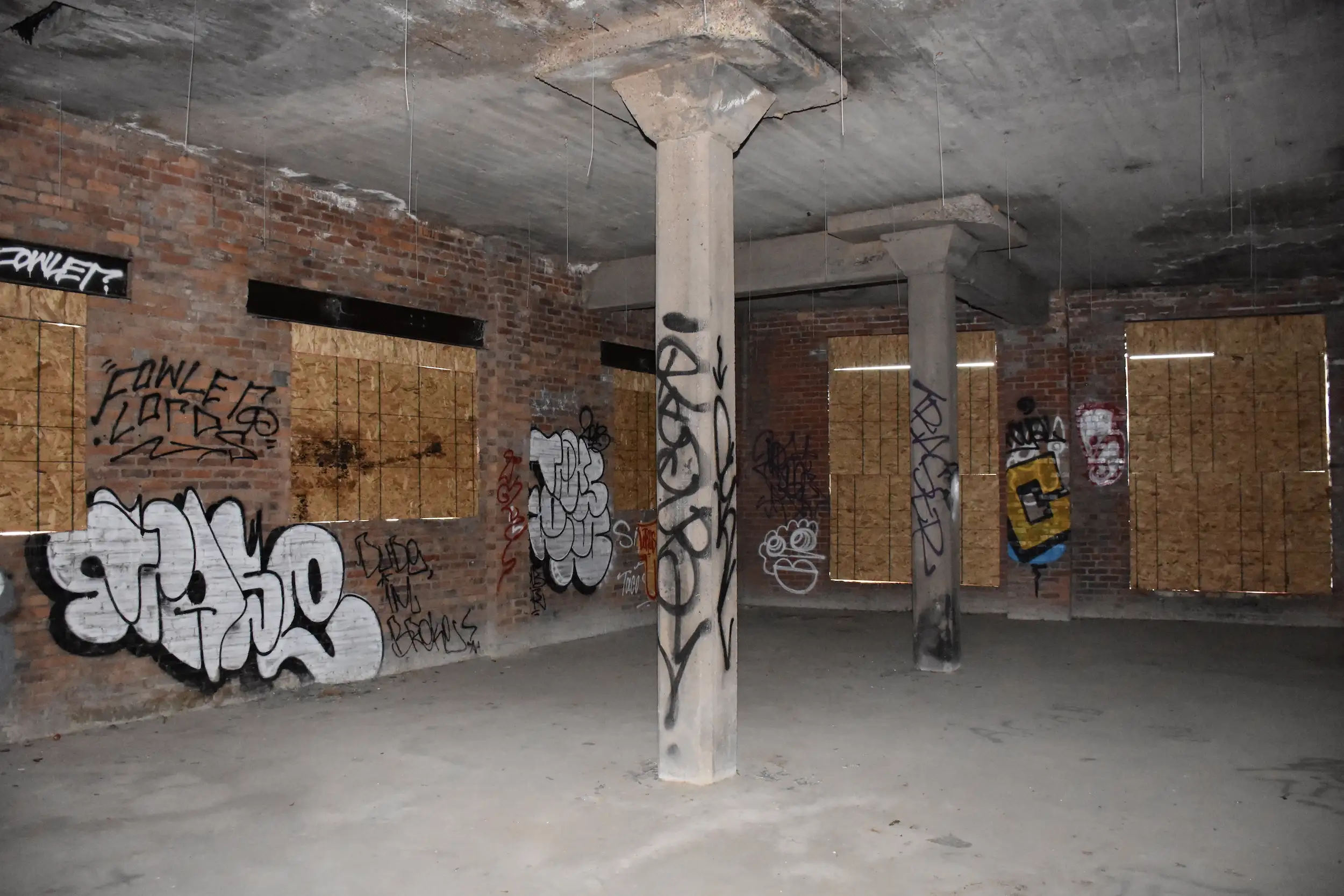
2
Pre-renovation views of the exterior (1) and interior (2) of the old Kent Building at 95 Roberts Street taken in 2019. Photos courtesy Rowhouse Architects
To take advantage of historic preservation tax credits, Cordon and Kelly had to restore the building’s exterior to its original 1920s condition as much as possible. They hired Rowhouse Architects to direct this aspect of the project—repairing the red-brick building envelope, converting a loading bay into a deeply recessed hotel entrance, and inserting new windows within existing openings. After some pleading with the preservation authorities, the architects were allowed to install new bi-fold, glass-paned garage doors in the other two bays of the building’s front elevation, allowing the hotel to open up to the outdoors in nice weather.
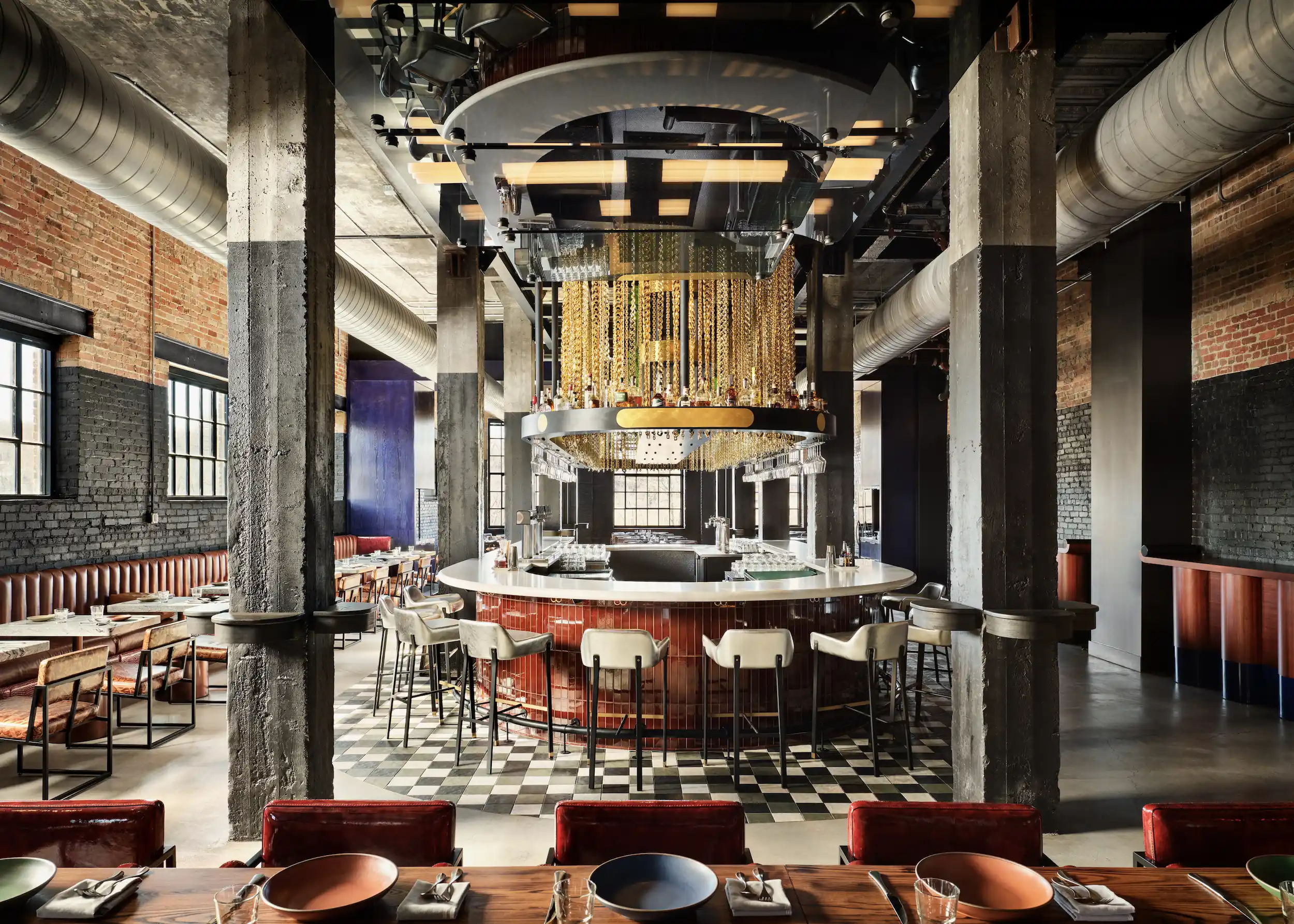
3
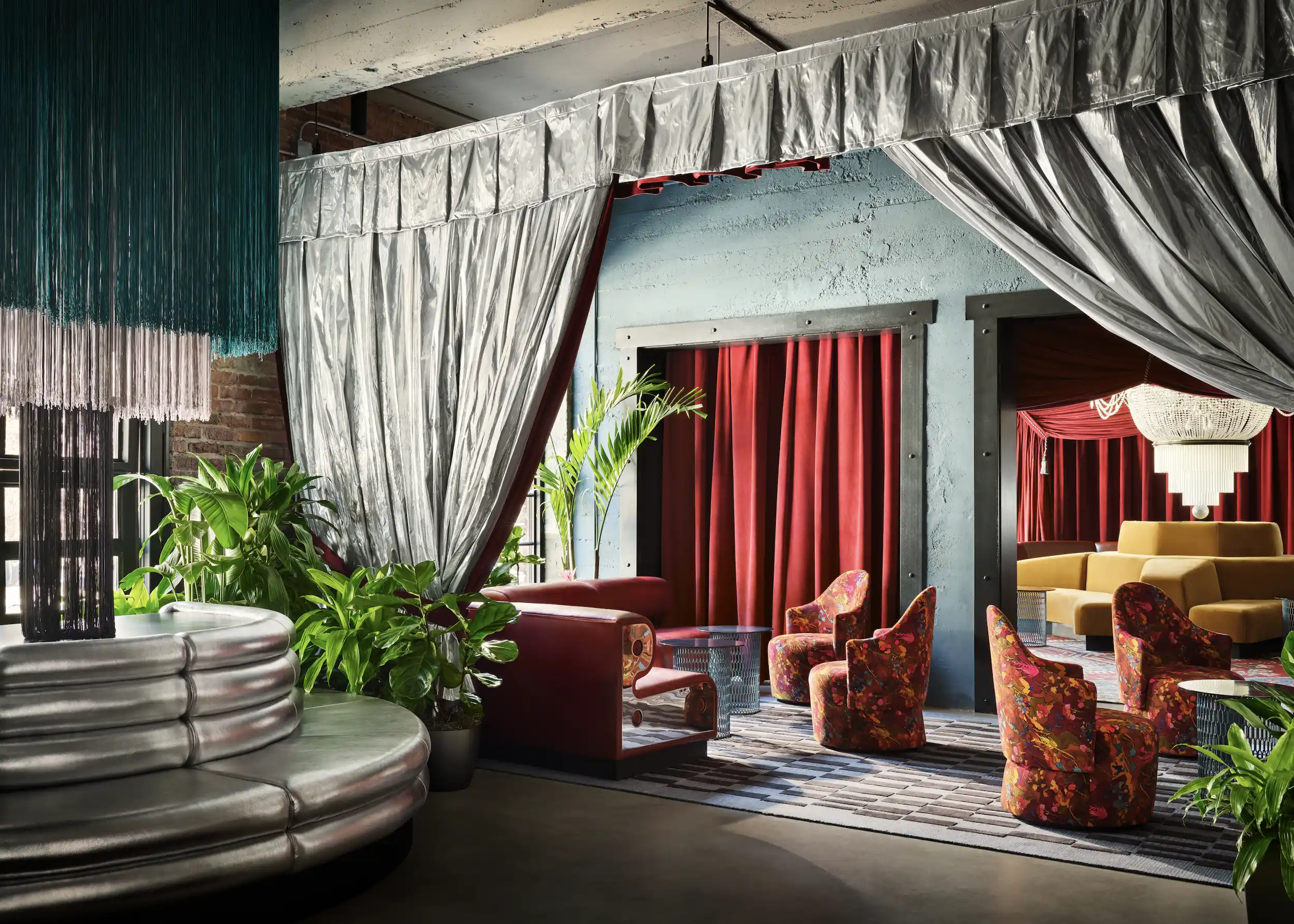
4
The hotel’s Golden Hour, a restaurant helmed by local chef Jacob Sessoms with an extensive cocktail program and wood grill (3); funky furnishings abound in the main reception area (4). Photos © David Mitchell
Although preservation guidelines required the removal of graffiti on the historic exterior, Suomi and Moran kept much of the tagging inside the structure. Indeed, they embraced street-art culture, bringing in local mural artist Ian Wilkinson to oversee and execute an extensive program of indoor wall painting—in public areas and in guest rooms. Wilkinson knew most of the taggers who had left their surreptitious handiwork inside the building and invited 18 of them to restore or re-do it. (Some of the original graffiti were inappropriate for an upscale hotel, so were altered or removed.) Wilkinson also created new wall paintings in a range of styles—from Belle Epoque nudes to fantastical landscapes and sketches of Asheville life.
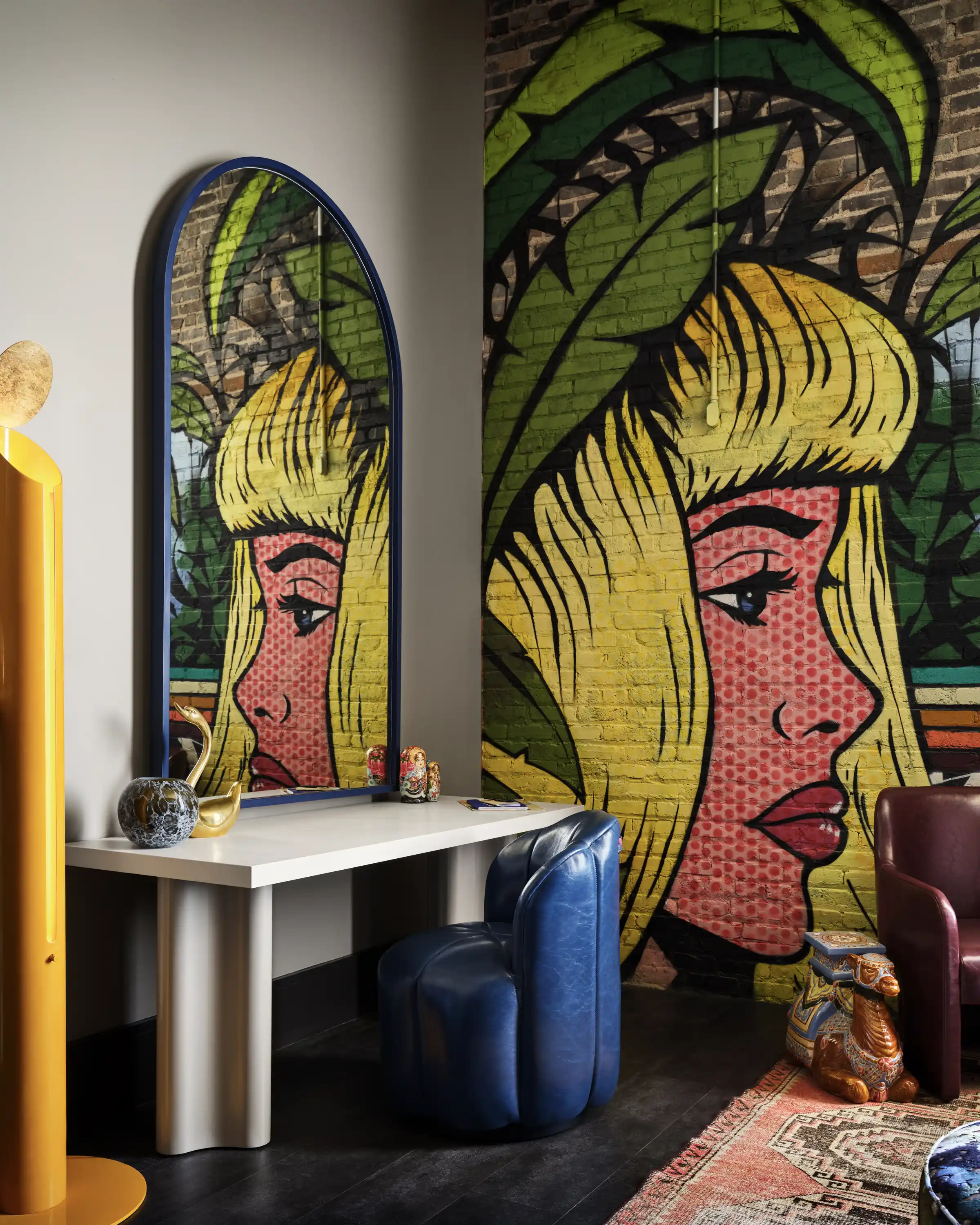
5
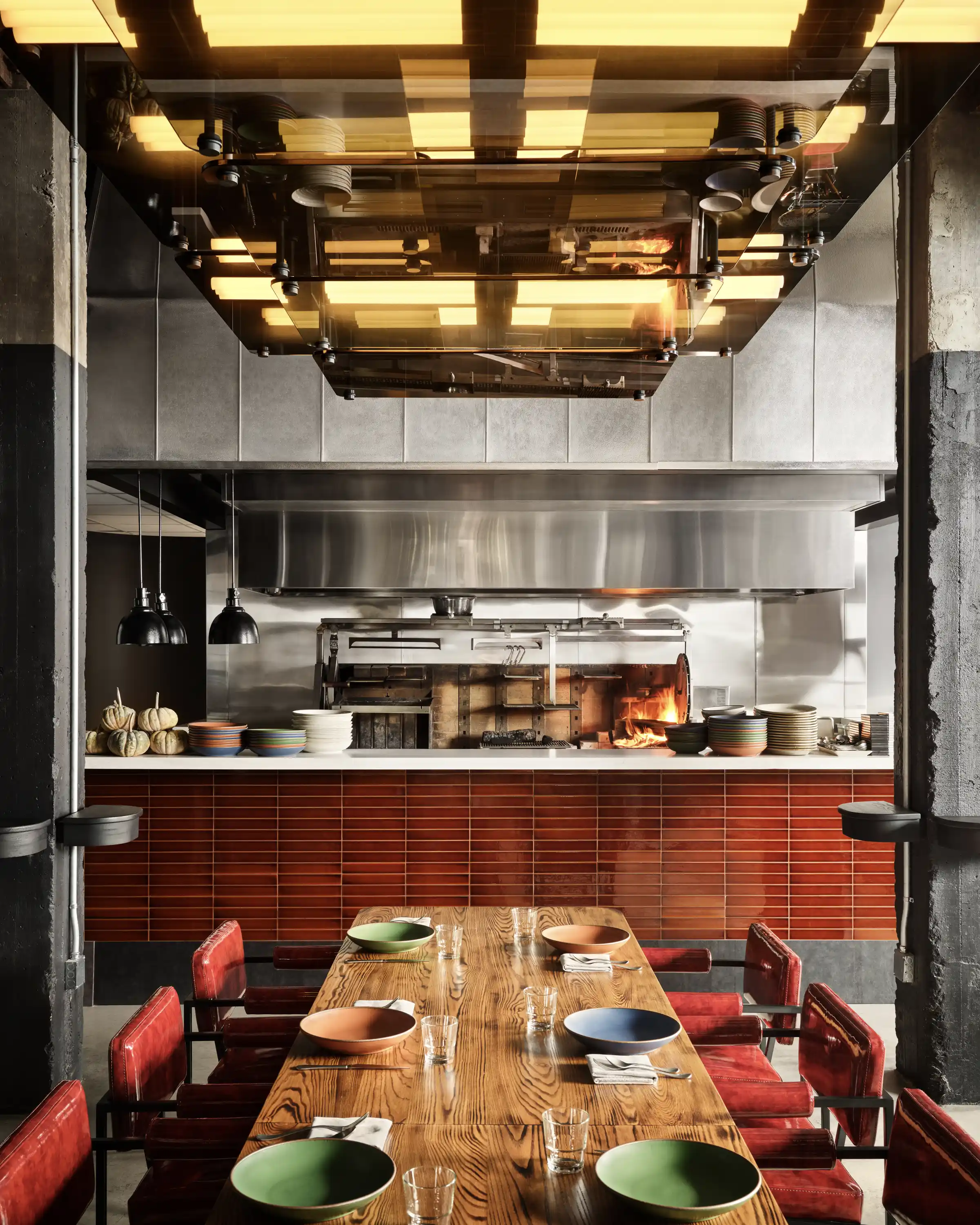
6
New murals and preserved graffiti can be found throughout the interior, including in guest rooms (5); seating and open kitchen at Golden Hour (6). Photos © David Mitchell
The hotel interiors flaunt a theatrical disposition with curtains (plush red on one side; synthetic silver on the other) separating spaces on the ground floor and exposed concrete and brick walls acting as dramatic backdrops for upholstered seating, boldly colored area rugs, and a large chandelier dripping with long strings of beads above a star-shaped banquette. The reception area is a mash-up of bank-teller decor and pieces that the designers imagined might be Kent family heirlooms. Neon and fluorescent lights hang in various places to give the rooms an ever-changing color palette. In the Afterglow bar, a few steps down from the main lobby spaces, a giant metal sphere fabricated by a company that supplies contraptions for circuses hovers above the counter and serves as a DJ booth. “We wanted to create a sense of surprise and discovery,” says Suomi of the cinematic procession of interior experiences.
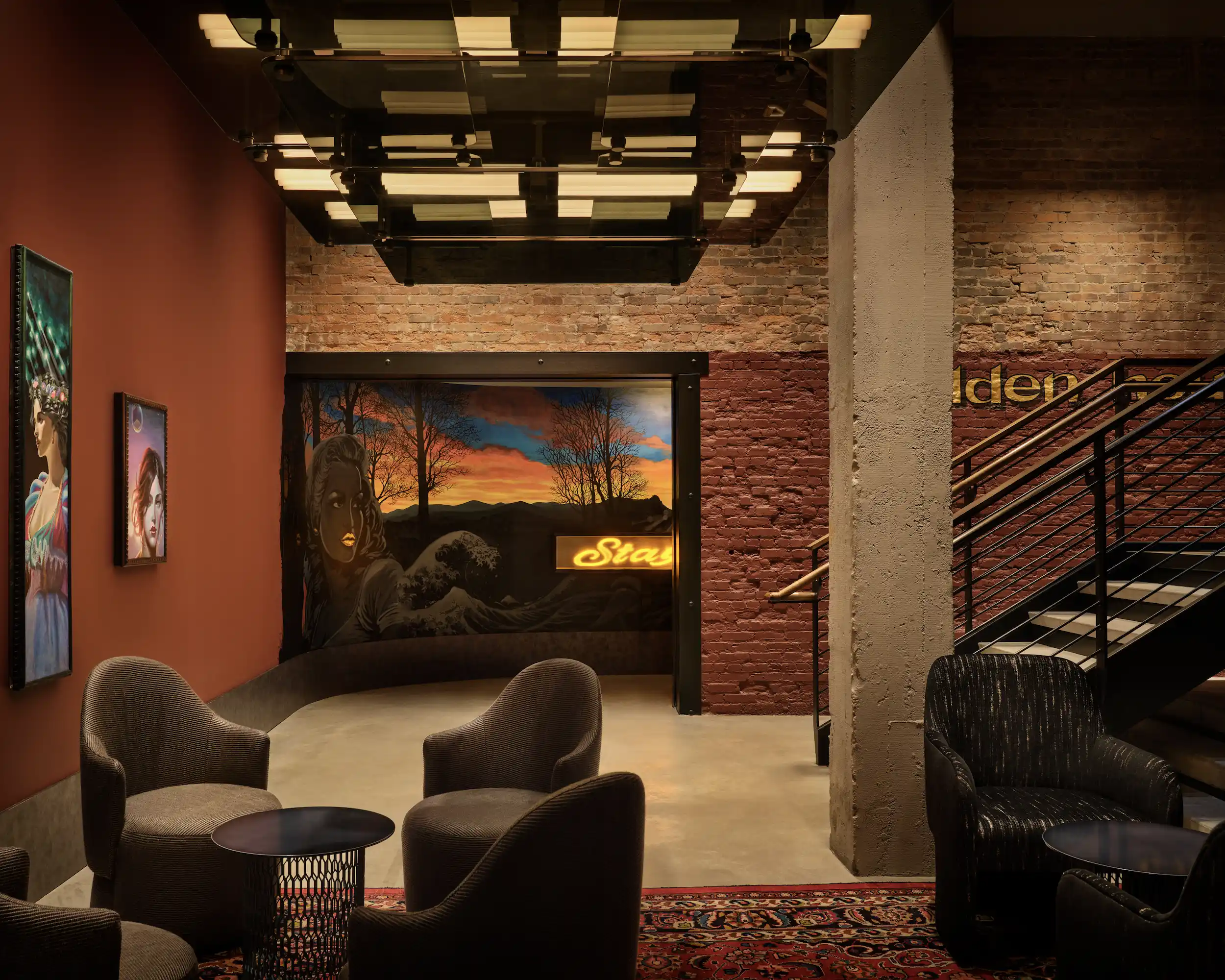
7
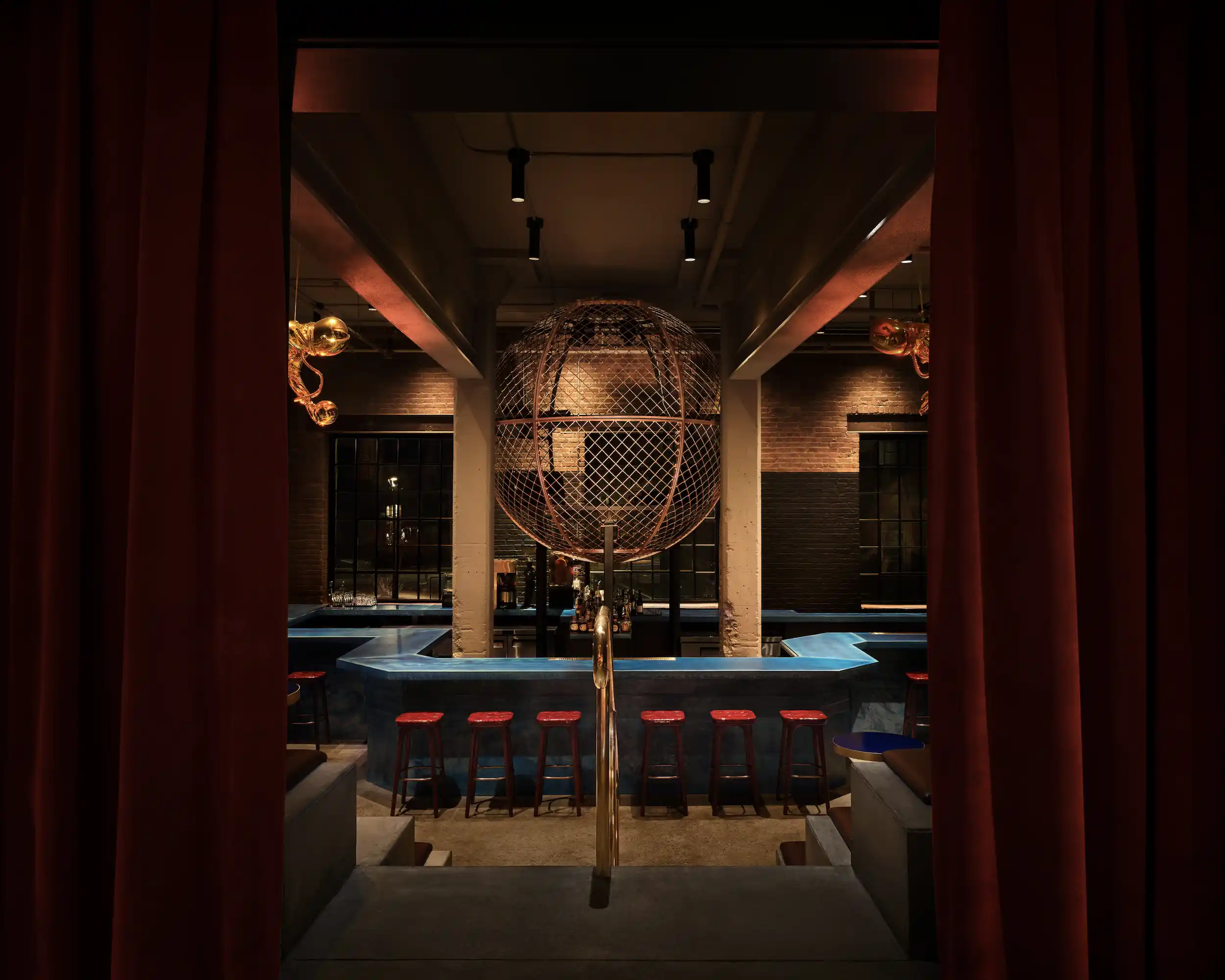
8
Small lounge outside the entrance to Golden Hour (7); Afterglow, an all-day café that transforms into a hip night spot, complete with a DJ cage suspended over the bar, afer dark. (8). Photos © David Mitchell
The building tumbles down a sloping site, with visitors entering on the fourth floor and guest rooms both above and below. Cordon and Kelly wanted guests to roam everywhere, so eating, drinking, and lounging spaces are scattered throughout the hotel—from a sprawling roof terrace to a windowless “secret” bar on the fifth floor and the main restaurant on the third. On the lowest level, a small lounge leads to a walkway along the river, which has a rail line running along it and used to be “the dirty old place where people would dump stuff,” says Cordon.
Guest rooms combine the rough with the quirky—tall masonry spaces (some as high as 16 feet) are filled with tented fabric over beds, for example, and shelves holding 1980s-era knickknacks, some from Eastern Europe.
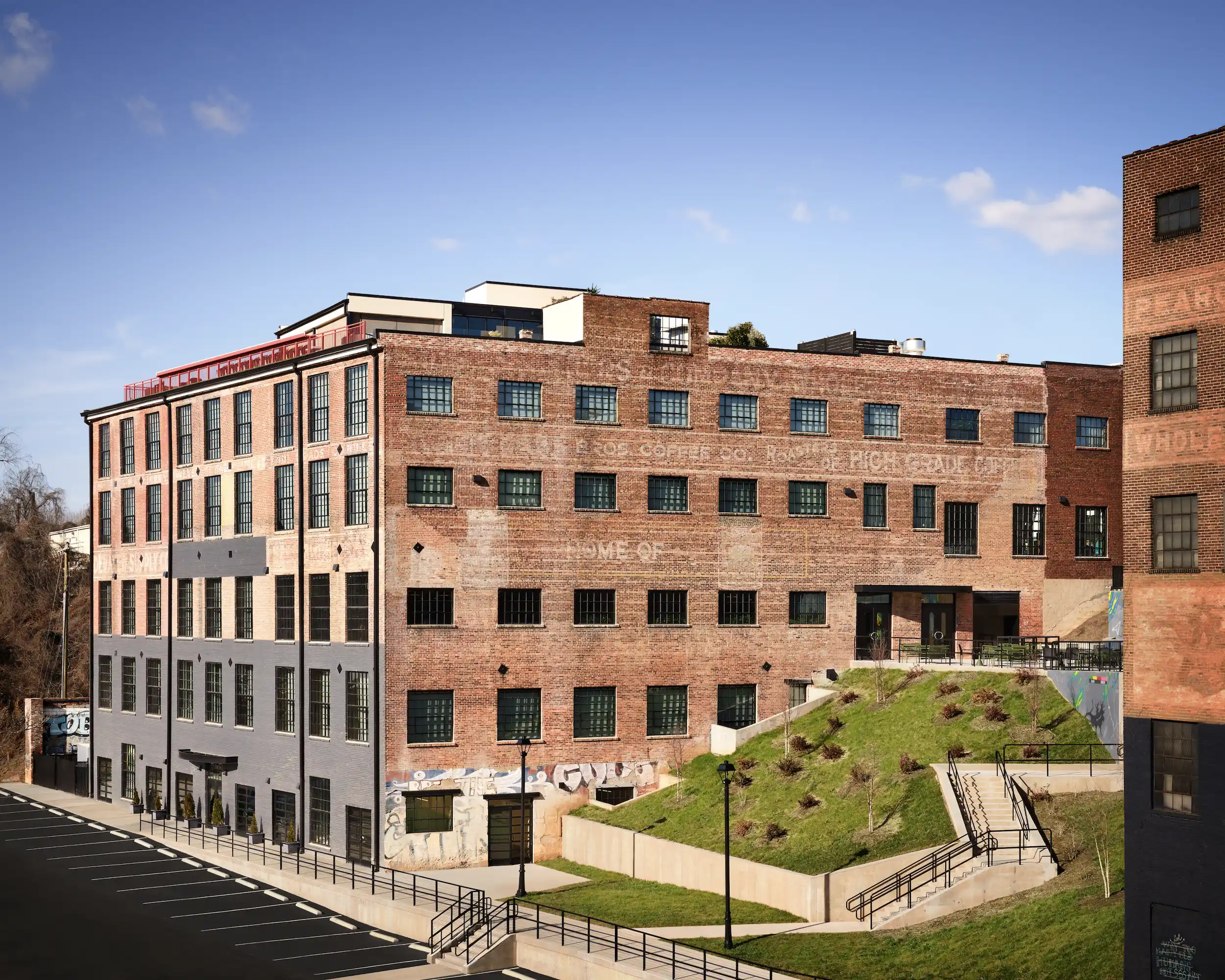 9
9
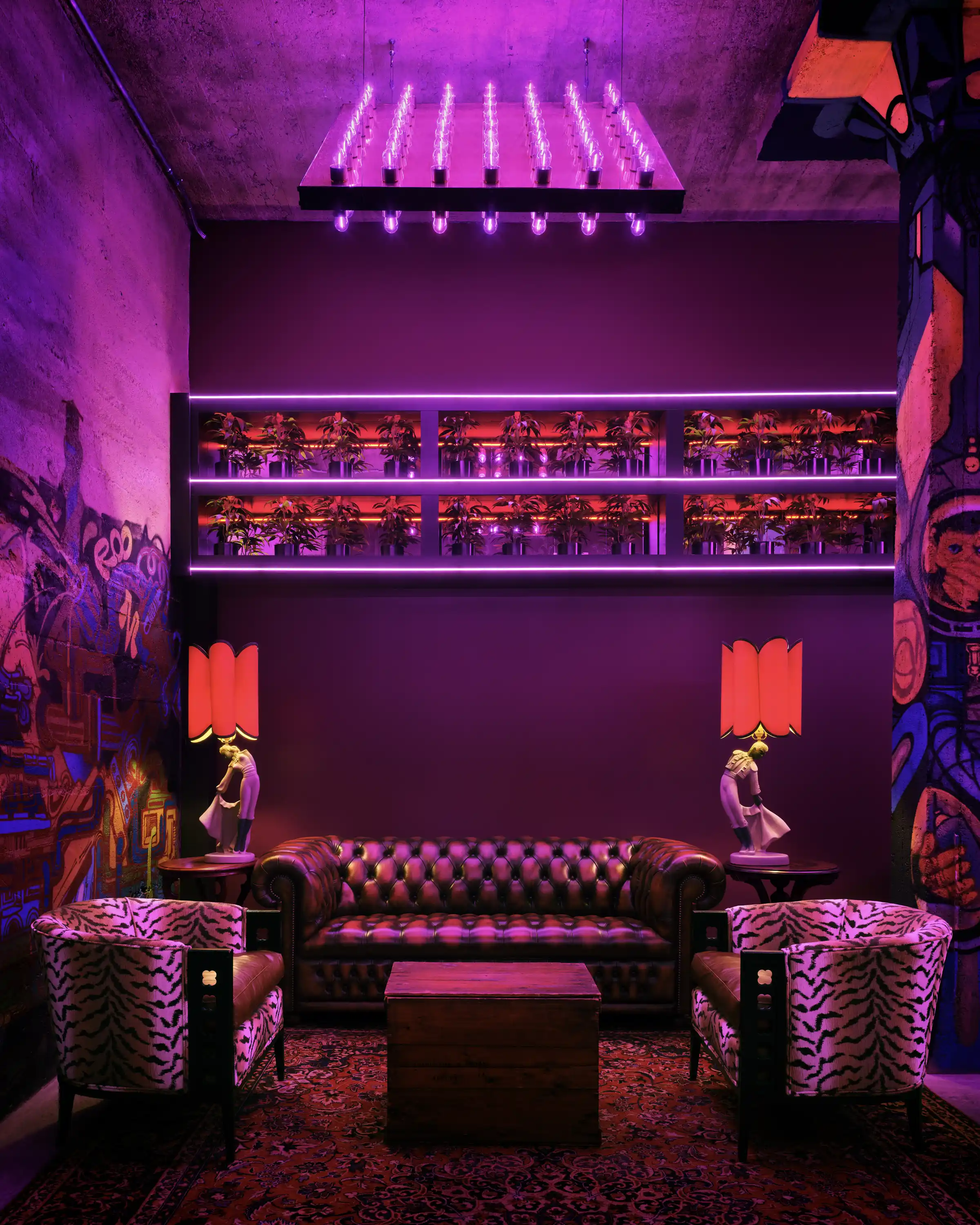
10
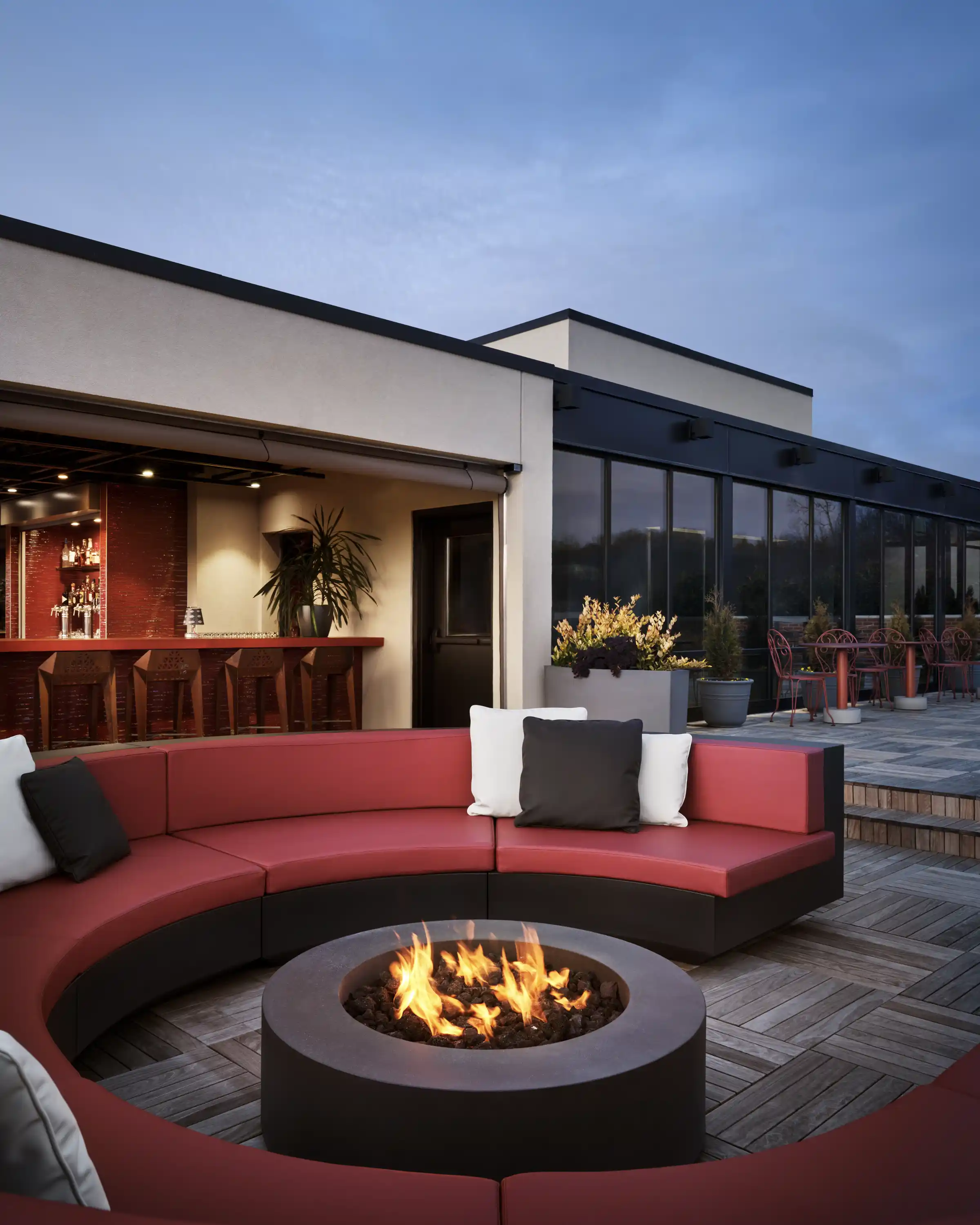
11
Due to the sloping nature of the site, guest rooms are located above and below the main entrance (9); a small “secret” bar located on the fifth floor (10); the expansive rooftop terrace features a fire pit, ample seating, and a cocktail bar, with views of the surrounding River Arts District (11). Photos © David Mitchell
“We wanted to create a neighborhood hotel,” says Kelly, “a place where local artists would wander in for coffee or a drink and visitors could strike up conversations with whomever happens to be there.” The Radical opened in October and is still evolving, as Wilkinson adds new touches to artwork in hallways and the staff fine-tunes public spaces for changing roles at different times of the day. Come in the morning and you’ll find a laid-back vibe with people enjoying croissants and coffee in Afterglow. Return in the evening and you may find a bunch of painters hanging out after an art opening. After a few cocktails, it’s hard to tell what’s authentic and what’s imagined. It’s all fun, so who cares?



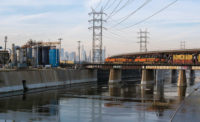
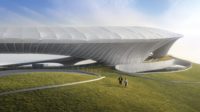
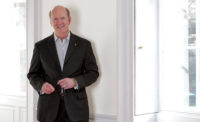
Post a comment to this article
Report Abusive Comment